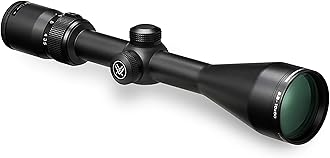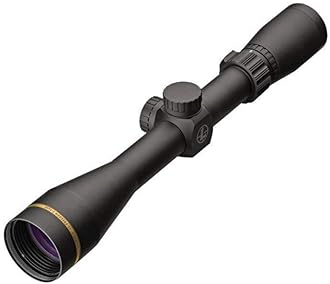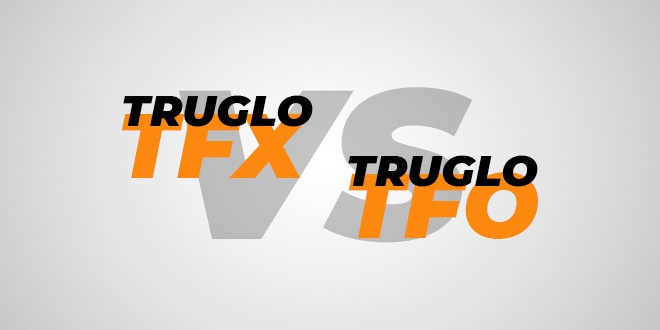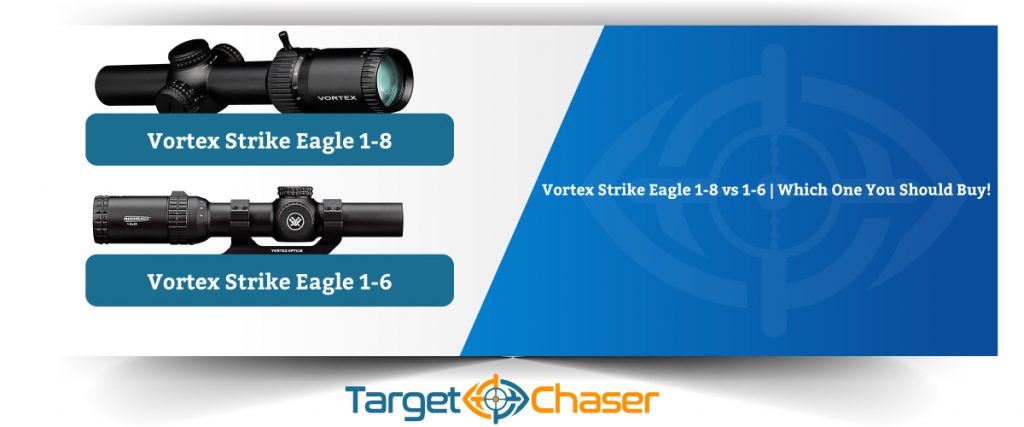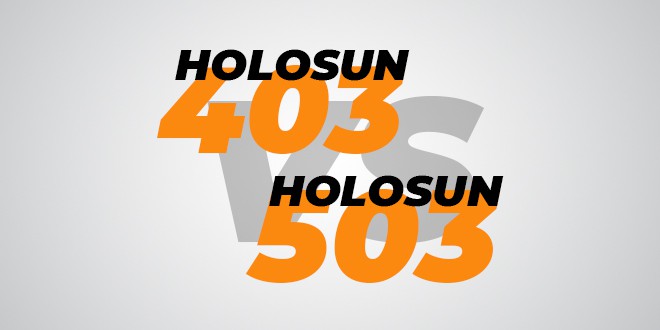When we think of good quality hunting scopes, the Vortex Diamondback and Leupold VX2 scopes are some of the best around. Both brands offer you scopes with a series of magnification ranges and reticle systems. Now, the problem starts when we try to figure out which scope we should buy for our hunting purposes.
Since both the Diamondback and VX2 series have an uncompromising quality, it becomes hard to decipher their differences to come to a concluding decision. Therefore, to help you make a better choice, we have compared the features of these scope models. And found some interesting insights that we would like to share with you all.
So without any delay, let’s get to the point!
Vortex Diamondback/ Leupold VX2 – Outlooks
Vortex Diamondback/ Leupold VX2 – Specs
| Specs | Vortex Diamondback | Leupold VX2 |
|---|---|---|
| Magnification | 5 types | 5 types |
| Reticle | Dead-Hold BDC, V-Plex | Duplex, Pig-Plex, Rimfire, Tri-MOA |
| Focal Panel | Second focal panel (SFP) | Second focal panel (SFP) |
| Tube Diameter | 1-inch | 1-inch |
| Construction Material | Aircraft-grade Aluminum | 6061-T6 Aircraft-grade Aluminum |
| Lens Coatings | Multi-coatings | Multi-coatings |
| Adjustment Clicks | ¼ MOA clicks | ¼ MOA clicks |
Vortex Diamondback/ Leupold VX2 – Differences
Since both of the scope series are from different brands, obviously technically they would be quite different. But it is important to see how these differences can make an impact on your hunting experience. Hence, we’ll be comparing them in the following terms:
- Reticle systems of the scopes are different. So we will be looking at the functions of these reticle systems so that you can choose a better reticle type for your shooting.
- The scopes are offered in numerous magnification ranges. By discussing these ranges we will try to give an idea which magnification range will be right for your shooting purposes.
- Lastly, we will see how the scopes are constructionally different and whether any of them have added features that may come as an advantage for you. So, let’s begin!
Discussion On The Scope Models
It is imperative that whenever you’re going through your options in scopes, you should look at the scope features closely. Because buying a scope is more like an investment you’re making. So always compare the product features with your shooting needs. This way you’ll be able to make an economic purchase!
Reticle
The choice of reticle type entirely depends on the shooter’s preferences. Still, it is important to know how different types of reticle systems can create an impact on your shooting experience.
Vortex Diamondback: In this scope series you will find two types of reticle systems such as Dead-Hold BDC and V-Plex. Both of them are placed on the second focal panel of the scopes. The Dead-Hold BDC reticle comes really handy when estimating the hold-over is one of your prime concerns. This reticle type is offered in all scopes of this Diamondback series.
On the other hand, the V-Plex reticle works like a standard Duplex reticle type which we know is extremely easy to go with. So, if you are buying mid-range scopes models 3-9×40 and 4-12×40, you have the option to choose a V-plex reticle instead of the BDC reticle.
Before we move on, we would like to mention that the Diamondback series has tactical scopes as well. They are the first focal panel scopes and offer higher magnification ranges. If you are interested in buying tactical scopes, you’re most welcome to check them out too.
So, as we are comparing these model scopes for hunting purposes, we are only discussing the scopes that are highly compatible with hunting situations.
Leupold VX2: With the Leupold VX2 series scopes, you will have 4 reticle systems. Every one of them functions differently in hunting scenarios. For starters, the classic 1962 Leupold Duplex reticle design is a favorite to low-range shooters, especially those who like minimalist reticles. Its thick outer post and thin, wire-like crosshairs make a perfect combination for fast target acquisition.
Next, we have the Pig-Plex reticle which is a simplified version of the original Pig-Plex reticle. It is specifically designed for hog hunting. By using its centralized circle, you can easily have quick target acquisition on the fast-moving targets.
The third reticle type this series offers is the Rimfire MOA reticle. This reticle was designed by following the T-MOA reticle type and it works great for the rimfire specific targets. The reticle is crafted to have a wide 5 MOA hash to make quick reference and thin crosshairs for precision aiming. Additionally, it features 25 MOA of bullet drop measurement in 1 MOA increments.
Lastly, there is a Tri-MOA reticle type which is also based on the T-MOA reticle design. It has thin crosshairs with 10 MOA of measurement in 3 directions. Plus, the upper portion of the reticle is left open. And it comes with the thick 5 MOA peripheral posts. All of these work together to make fast and clear shots at the targets. Like the Duplex reticle, this one is also popular for low-range shootings.
All in all, both scope series offer great reticle systems for hunting. But the Leupold VX2 offers you more options in the reticle system than the Vortex Diamondback scopes.
- Lenses are fully multi-coated for crstyal clear, bright images from dawn til dusk. The fast focus eyepiece allows for quick and easy reticle focusing.
Magnification Range
Whenever we look for hunting scopes, our main concern remains with finding the right magnification range. So in bringing out the perfect low-range and mid-range scopes, both of the brands have fought eye to eye. The table below shows the magnification ranges you will get in the Diamondback and VX2 series:
| Vortex Diamondback | Leupold VX2 |
|---|---|
| 1.75-5×32 | 1.5-4×20 |
| 2-7×35 | 2-7×33 |
| 3-9×40 | 3-9×40 |
| 3.5-10×50 | 4-12×40 |
| 4-12×40 | 6-18×40 |
Vortex Diamondback: Given the chart, it looks like Vortex has highly focused on fulfilling the hunters’ need for low or mid range shooting. To begin with, If we look at their low range magnification scope 1.75-5×32, along with providing a low power range they have been really careful enough to include good objective lens diameter.
Since having optical clarity is equally important like the correct magnification power, this mid-size objective lens works great with the scope. Similarly, in the mid-range magnification scopes, they have included mid-long size objective lenses.
For example, magnification power-wise the 3-9×40 and the 3.5-10×50 don’t have that difference. But, you would still like to take a pause and think about which one to pick. Because the scopes have differences in the objective lenses. So, we would say it is quite a thoughtful decision that Vortex made to give their customers a good option in choosing a mid-range scope with their preferred objective lens diameter.
Leupold VX2: Conversely, Leupold seems to be more focused on arranging their VX2 series with mid-long range scopes. The magnification range and the objective lens diameter they offer here are perfect for mid to long-range hunting.
However, when it comes down to the low power scopes, we felt like they haven’t given much attention to including the right objective lens diameter. We don’t think adding objective lenses like 20mm or 33mm in the low-range scopes was the best decision they made. Honestly, they could’ve been more considerate about it.
So, in terms of magnification range, both of the brands offer various options. When Vortex is more focused on the mid-range magnification power, Leupold allows you to play more around the mid-long-range shooting distances.
Construction Of The Scopes
Imagine a scenario, where you’re happy that you got a scope with your desired reticle type and with perfect magnification power. But the scope cracked on your shooting on the next day of your purchase. Why? Because of its poor construction material! Hence, we would suggest if you don’t want to make your happy moment a nightmare, do check the construction material of the scopes.
Vortex Diamondback: The scopes of this series are constructed with Aircraft-grade Aluminum which makes the scopes durable enough to use under any weather or environmental conditions.
Plus, the scope lenses are multi-coated with 91% light filtering ability. One of the good parts of these scopes is the precision glide erector System. It allows you to use the magnification ranges as smoothly as possible.
Leupold VX2: In contrast, this series of scopes is made of 6061-T6 Aircraft-grade Aluminum. Now the good thing about this material is that it makes the scopes extremely durable as well as lightweight.
So, compared to the Vortex Diamondback series, these scopes weigh quite lighter. Another interesting part of these scopes is the Twilight Light Management System. This helps the hunters to aim in the low light conditions.
On the whole, both the Diamondback scopes and VX2 scopes have sturdy constructions. But the VX2 series scopes weigh less than the Diamondback scopes. Additionally, the Leupold VX2 has better low-light visibility compared to the other series.
Vortex Diamondback/ Leupold VX2 – Videos
Summary
One thing is for sure, both of the scope models work great for hunting. Hence, it ultimately boils down to you and your preferences regarding choosing the right scope for hunting. To put it simply, if you’re on a budget and looking for good-quality hunting scopes, Vortex Diamondback is for you. Especially, if you mostly shoot within low-mid range distances, this series scope will be perfect for you.
However, in case of budget is not a concern for you and you’re looking for high-quality mid to long-range hunting scopes, undoubtedly Leupold VX2 series scopes are what you need. Just go through the magnification ranges they offer and pick your desired power range. That’s it! It’s a matter of time before you will be enjoying your hunting like no other!
Hi, I’m Brent Hansford. A writer turned hunter & now sharing my love for the sport through writing. As I practically breathe weapons, I firmly believe I’m capable of providing you with new knowledge about firearms and hunting. My mission is to help more people get better at hunting & master the weapons. Let me help with unleashing the beast within you!

